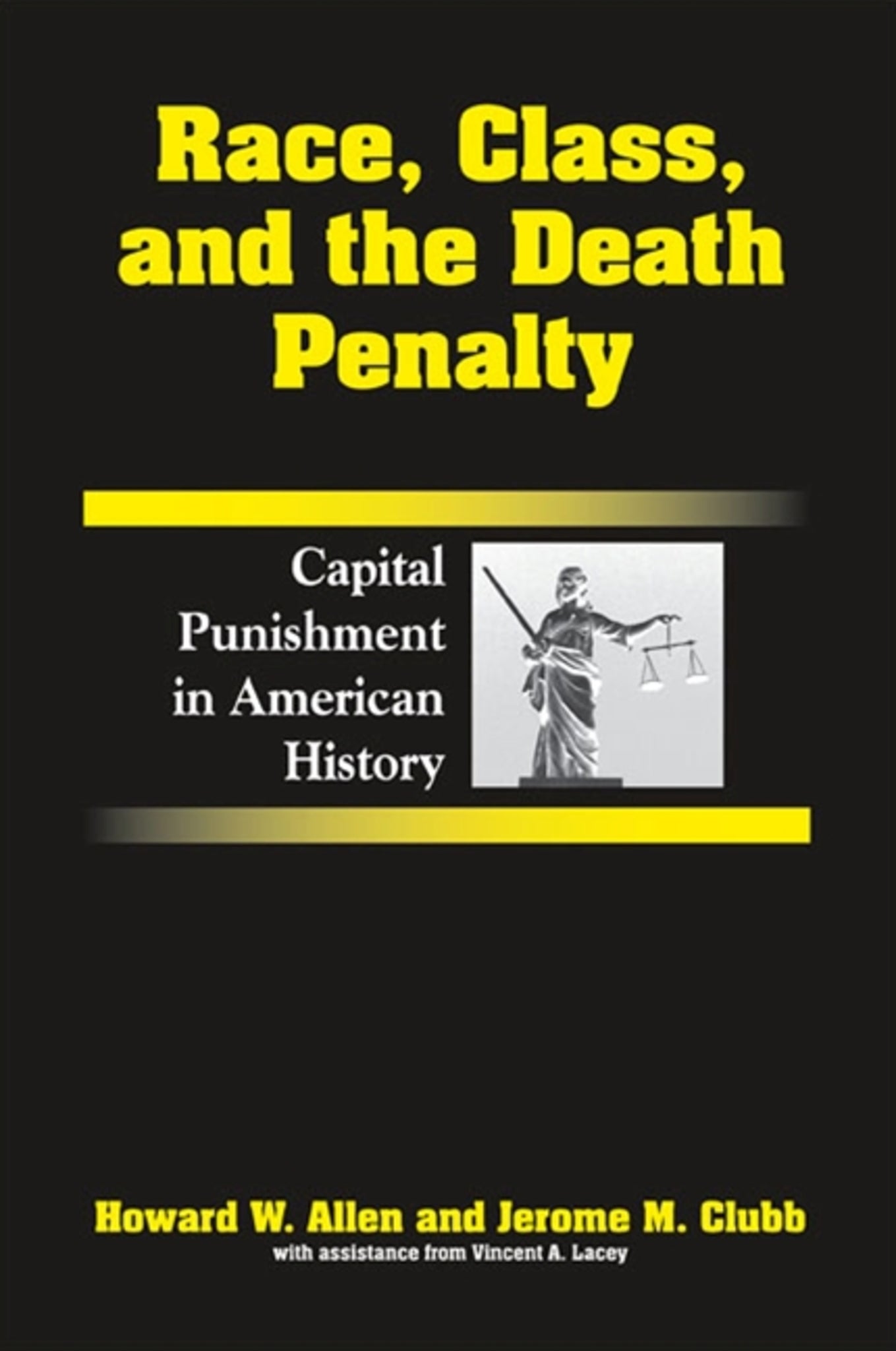We're sorry. An error has occurred
Please cancel or retry.
Race, Class, and the Death Penalty

Some error occured while loading the Quick View. Please close the Quick View and try reloading the page.
Couldn't load pickup availability
- Format:
-
15 May 2008

Examines both the legal and illegal uses of the death penalty in American history.
In Race, Class, and the Death Penalty, Howard W. Allen and Jerome M. Clubb examine historical trends in the use of capital punishment in the United States. Employing empirical data, the authors explore how frequently the death penalty has been used and how its frequency of use has changed, where the death penalty was used most often, the offenses charged, and the characteristics of the executed. Not surprisingly, their findings indicate that minority groups-particularly African Americans and those of lower social and economic status in general-have been executed in disproportionate numbers. The authors conclude that while the use of the death penalty has progressively declined, and the range of capital offenses has narrowed, disparities in the use of capital punishment between social groups and regions that appeared in the colonial period have persisted into the twenty-first century.


"…an exhaustive statistical analysis of the death penalty over the course of American history … the most complete database of executions in the United States to date." — American Historical Review
"…draws from and builds on an extraordinary data set compiled by M. Watt Espy, who gathered information on every execution in American history … a very useful book." — Journal of Southern History
"…pure quantitative history at its best … an important contribution to the field." — Journal of American Histo
"The authors have made ample (and intelligent) use of the Espy File Executions in the U.S. 1608–2002 at the Death Penalty Information Center, the most systematic database available on the history of capital punishment in the US … Allen and Clubb provide a straightforward statistical portrait of capital punishment in the US from the Colonial era to the post-WW II period. The findings, while not surprising, are important for the simple fact that they rely on a highly respected database." — CHOICE
"The long-standing practice of capital punishment in this country has been controversial almost from its inception, and the controversy has been particularly intense in recent decades. A careful analysis of the empirical facts of our historical practices is tremendously important, and the authors do a great service in collecting and assimilating many partial sources into what looks to be one of the most comprehensive and definitive treatments of empirical information on the use of capital punishment in the United States throughout its history." — Carol S. Steiker, coauthor of Criminal Law and Its Processes: Cases and Materials, Eighth Edition
List of Illustrations
Acknowledgments
Introduction
1. The Death Penalty in National Perspective
2. The Colonial and Revolutionary Eras
3. The Early Republic, 1786-1865
4. The South and the Border, 1866-1945
5. The Northeast, 1866-1945
6. The Western Regions, 1836-1945
7. Social Perspectives
8. The Death Penalty after 1945
9. The Death Penalty in American History
Appendix
Notes
Index



